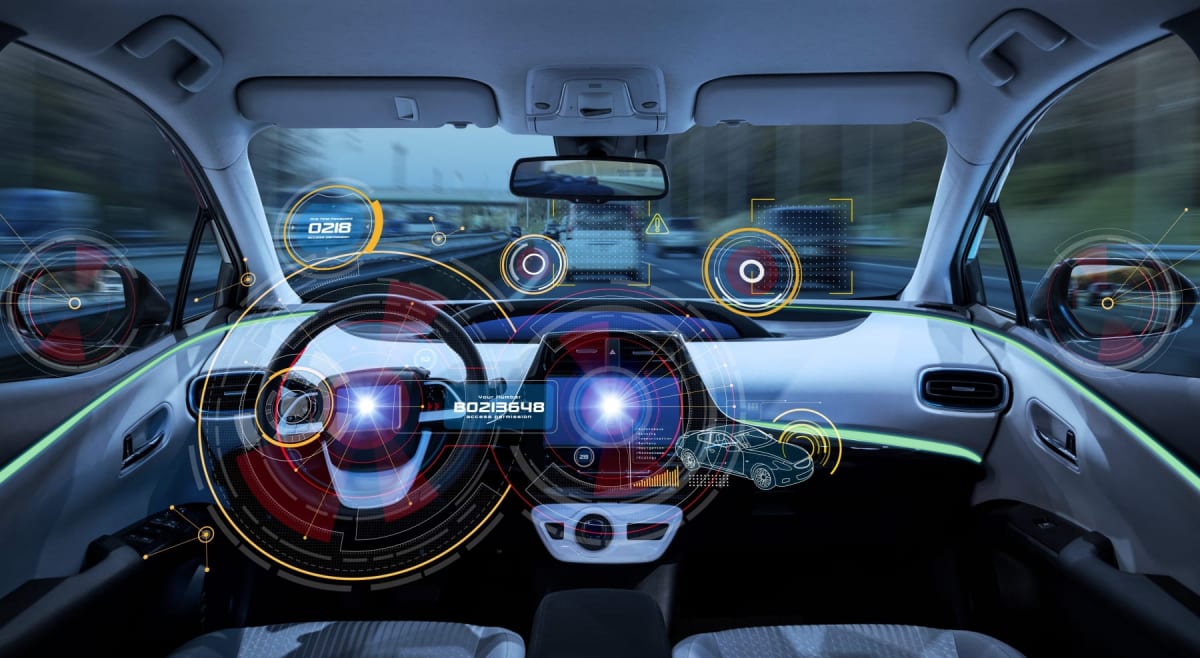In this blog, I would like to highlight a certain aspect of sharing our roads with autonomous vehicles from the perspective of safety achieved through communication, which is rooted in social behavior. I will explore the idea of external interfaces as a mean through which an intention is communicated to the external world.
Autonomous vehicles: technology of tomorrow?
Autonomous vehicles (AVs) are coming soon, and, whether we like it or not, they might forever change how we behave on our roads.
The most important step before introducing such vehicles onto the roads is perfecting the technology that will be at the heart of every AV.
Research centers all over the world are working hard to develop the best solutions, prioritizing safety and reliability of the hardware and software powering these vehicles.
It could be safely assumed that in 2019 the technology is almost ready … However, the word almost is quite essential here!
Using roads
Perhaps, we don’t always think of it, but we are all road users. Whether we drive cars, ride bicycles, or even when we walk across the road. The moment we are on the road, we become road users both in legal terms and in everyday life meaning.
To operate on a road environment safely, users must follow specific rules of the road no matter where they live.
I don’t just mean legal regulations, but also natural, common-sense driving rules like go when safe, stop when something is in your way, and communicate your intentions. All these facilitate our safety. And, it is the last rule that I’d like to explore in more detail here.
Social communication – Natural interface
Communicating intentions to other road users while driving is a subconscious activity. There are no written rules about it, yet everyone does it rather efficiently by using hand gestures, eye contact, etc.
How can AVs operating in level 5 automation mode (driverless) achieve that with the same efficiency when there is no human driver onboard?
This issue was brought to attention by Swiss researchers Grace Eden, Benjamin Nanchen, Randolf Ramseyer and Florian Evéquoz in 2017. Together they investigated how the public interacts with the autonomous shuttle operating in the city of Sion, Switzerland, by interviewing passengers and other road users, and by analyzing video recordings of passengers’ behavior. Their findings are presented in the article “On the Road with an Autonomous Passenger Shuttle: Integration in Public Spaces.” published in the Proceedings of the 2017 CHI Conference Extended Abstracts on Human Factors in Computing Systems.
I don’t understand it
The first interesting point came through interviewing other road users.
The biggest takeaway was that people thought that AVs slow the traffic down. Many drivers do not know how to interpret the AV’s intentions; therefore, they would drive extra careful (slow) around it or avoid it completely by taking alternative routes.
Here, we can see a direct reference to the need for external interfaces, as this is what communicates information about the vehicle’s intentions.
Wave your hand
In terms of the regular car, this function is a domain of the driver and his or her ability to communicate nonverbally.
The best example would be a simple hand gesture, assuring pedestrians that it’s now safe to cross the road in front of the vehicle.
This simple form of (social) communication between two road users is one of the greatest challenges AVs’ developers have to take into account when conceptualizing potential AVs as active road users.
Passenger in action
Another interesting discovery identified in this study comes from the video analysis of the passengers’ behavior while onboard the shuttle.
When on the road, one of the passengers noticed a rather dangerous situation.
Another road user was just about to engage in an overtaking maneuver that could potentially cause an accident with the shuttle. The passenger reacted immediately by waving his hand at the other driver, not to overtake the shuttle, and after a short interaction between the two the other driver gave up on the idea of overtaking and a potential accident was avoided.
Human, an external interface
This is a good example of when the external interface, communicating information about intention, prevented a road accident. Only, this time it was the human passenger who quickly assessed the situation and took appropriate actions by communicating a nonverbal message to another road user.
Summary
The authors concluded their study by highlighting the importance of communication, as a factor encouraging safety. They point out that road users constantly communicate their intentions, negotiating priorities, etc. Therefore, future AVs should also be able to do that, and the best way is to adopt the means of external interfaces that will act as an intention communicator to other road users.
Without a doubt, the key component for safe navigation on the road is the ability to communicate with other road users. In the next blog, I’d like to present potential solutions for AVs’ external interfaces and how scientists go about testing their designs.
Reference:
Eden, G., Nanchen, B., Ramseyer, R., & Evéquoz, F. (2017, May). On the road with an autonomous passenger shuttle: integration in public spaces. In Proceedings of the 2017 CHI Conference Extended Abstracts on Human Factors in Computing Systems (pp. 1569-1576). ACM.

